California State University, Los Angeles
California State University, Los Angeles (Cal State LA) is a public university in Los Angeles, California. It is part of the 23-campus California State University (CSU) system. Cal State LA offers 129 bachelor's degrees, 112 master's degrees, and four doctoral degrees: a Doctor of Philosophy (Ph.D) in special education in collaboration with the University of California, Los Angeles (UCLA), a Doctor of Education (Ed.D) in Educational Leadership, a Doctor of Nursing Practice (DNP) and a Doctor of Audiology (AuD). It also offers 22 teaching credentials.[6][7]
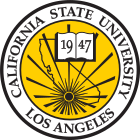 | |
Former names | Los Angeles State College of Applied Arts and Sciences (1947–64) California State College at Los Angeles (1964–72) |
|---|---|
| Motto | Vox Veritas Vita (Latin) |
Motto in English | "Voice Truth Life" – Speak the truth as a way of life. |
| Type | Public land-grant |
| Established | 1947[1] |
| Endowment | $42.5 million (2019)[2] |
| President | William A. Covino[3] |
| Provost | José Luis Alvarado[4] |
Academic staff | 1,031 |
| Students | 26,361 (Fall 2019)[5] |
| Undergraduates | 22,626 (Fall 2019)[5] |
| Postgraduates | 3,735 (Fall 2019)[5] |
| Location | , , United States |
| Campus | Urban, 175 acres (71 ha) |
| Colors | Black & Gold |
| Athletics | NCAA Division II – CCAA |
| Nickname | Golden Eagles |
| Affiliations | California State University system Western Association of Schools and Colleges |
| Mascot | Eddie the Golden Eagle |
| Website | www |
In Fall 2018, Cal State LA received the 5th-most applications of any CSU campus for incoming freshmen, and had the 5th-lowest admit rate.[8] Cal State LA has a student body of 26,361 as of Fall 2019, which includes 22,626 undergraduates, primarily from the greater Los Angeles area, and 3,735 graduate students.[5] While Cal State LA previously operated on the quarter system, the university transitioned to the semester system starting in Fall 2016, with each academic year now consisting of two 15-week semesters.[9] Cal State LA is organized into nine colleges that house a total of four schools and approximately 50 academic departments, divisions and interdisciplinary programs, offering a variety of majors.[10] The Early Entrance Program (EEP) in the Honors College for gifted students as young as 12 is the only one of its kind in the United States in promoting a direct transitional scheme from middle and high school to college without intermediary remedial education.[11] Cal State LA is a Hispanic-serving institution.
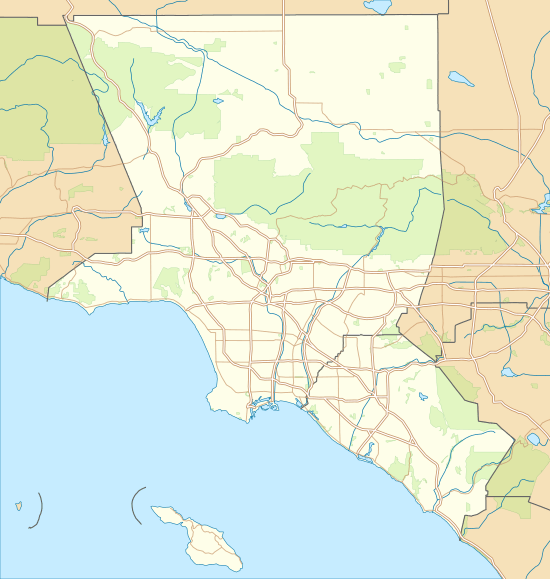
The 175-acre (71 ha) hilltop campus core is home to the nation's first Charter College of Education, a NASA-funded SPACE program, Rockefeller-supported humanities center, and a National Science Foundation-funded environmental research center. Cal State LA is home to the Luckman Fine Arts Complex.
It is also home to two high schools: the Marc and Eva Stern Math and Science School and the Los Angeles County High School for the Arts (LACHSA), the only arts high school in Los Angeles that allows students from any district within Los Angeles County to attend.
History
First half of 20th century

The university is located on the site of one of California's 36 original adobes, built in 1776 by Franciscan missionaries and destroyed by fire in 1908. When the Spanish Franciscans founded the San Gabriel Mission in 1771, they dubbed the small river El Rio Rosa de Castillo. These lands once were part of a Mexican land grant known as Rancho Rosa Castilla, given to Juan Batista Batz, a Basque rancher from northern Spain and his wife, Catalina who settled here in the 1852.[13][14][15][16] Batz used the land for farming and intensive sheep ranching. The inspiration for the name of the ranch, according to local historians, was the abundant amount of native wild Wood roses (Rosa californica) that grew near the ranch home along the creek. The Tongva Indians named this area, Ochuunga (Place of Roses).[17] The main drive through the campus is known as Paseo Rancho Castilla, in acknowledgment of the university's historic heritage.
Cal State LA was founded on July 2, 1947 by an act of the California legislature and opened for classes as Los Angeles State College (LASC) on the campus of Los Angeles City College (LACC). LACC is a public community college in East Hollywood, Los Angeles located on Vermont Avenue south of Santa Monica Boulevard the former campus of UCLA and originally a farm outside Los Angeles. As president of LACC, P. Victor Peterson became the acting president of the state college. Since the college had opened in September, 1947, with 136 students, it had grown in two years to over 2,000 students. Most were studying under the GI Bill, which had been largely responsible for establishment of the college. The first class of seven students graduated in 1948.
In 1949, when Howard S. McDonald became president of both Los Angeles State College and Los Angeles City College, the state college upper division classes were being taught in borrowed spaces on the City College campus by mostly part-time faculty. He hired administrators to help him formally organize the colleges. Then he found a site within LA[18] to house the new "Los Angeles State College of Applied Arts and Sciences" (LASCAAS), which replaced the Los Angeles State College also in 1949 after being reconstituted by the Legislature.[19][18] Howard S. McDonald enjoyed telling how some influential supporters of the University of Southern California (USC) opposed his selection of a piece of land in Baldwin Hills, and how the then Los Angeles Mayor Norris Poulson ran him out of Chavez Ravine so that he could lure the Dodger baseball team to Los Angeles. The college opened in its new location in 1958, Howard S. McDonald becomes first full-time president.[20] When McDonald retired in 1962, seven academic buildings on the new campus were completed and an eighth structure (North Hall, later named King Hall) was nearing completion. North Hall opened in September 1962.[18]
Second half of 20th century

In 1952 the state proposed a new satellite campus for Cal State LA, at the time known as Los Angeles State College, and in July 1958, the campus separated from Cal State LA and was renamed San Fernando Valley State College (now known as California State University, Northridge).[21][21] The first master’s degrees were awarded in 1952.
Since 1954, Cal State LA has been accredited by the Western Association of Schools and Colleges (WASC). The university's credential programs are approved by the Commission for Teacher Credentialing Committee on Accreditation.
In 1955, officials broke ground on the current location, dubbed the Ramona site at the time. The college then moved to its present campus in the northeastern section of the City of Los Angeles, 5 miles (8 km) east of the Civic Center.[22]
1957 the first Cal State LA time capsule is sealed in corner of Administration building (now Student Affairs) and a second Time capsule was buried during the Cal State LA 50th anniversary celebration September 1998.
In 1962 the college welcomed its third president Albert D. Graves who was vice president of Academic Affairs of LASCAAS. The college also entered into its first contract to prepare students for the U.S. Peace Corps. The first group of 65 volunteers was trained for service in the Dominican Republic in the areas of teacher training, music teacher training and urban community action. The first Commencement at new site takes place in June 1963.
On December 6, 1963 the California State College (now California State University) Board of Trustees named the library after the late 35th president of the United States John F. Kennedy. An edifice plaque was unveiled during the John F. Kennedy Memorial Library naming ceremony on February 12, 1964 and in November 1969 the library North Wing is dedicated.
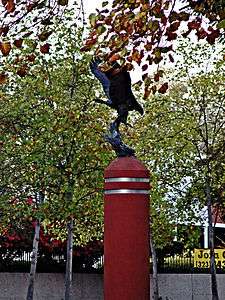
In 1964, the Board of Trustees of the California State Colleges changed the name of the college to the "California State College at Los Angeles" (CSCLA), and in 1968 to "California State College, Los Angeles", when it became part of the California State College (CSC) system. In 1972, CSCLA was awarded university status and was renamed California State University, Los Angeles (CSULA).[23]
In 1968 Cal State LA established the nation's first Chicano Studies department.[24]
In fall 1970 the South Tower and South Hall were completed and opened. July 1976 the CSU Board of Trustees approved the renaming of South Tower to Simpson Tower, in memory of Floyd R. Simpson, first dean, of the School of Business and Economics. South Hall renamed Salazar Hall in memory of slain Los Angeles Times journalist and news director for KMEX-DT Ruben Salazar.
The original mascot of the school was the Diablo. In 1980, new university president James Rosser adopted a new mascot, Eddie the golden eagle, designed to be more reflective of the campus' highly diverse community. The theme was extended to student facilities such as the student union and bookstore.[25]
A Statue of Confucius, a gift of the Republic of China in Taiwan, was dedicated June 1987. The statue was moved to a new campus location in summer 2005. Its home is now on the grassy area, south of the State Playhouse.
In 1993, the California State University (CSU) Chancellor and Trustees approved development of Cal State LA's Charter College of Education, creating the first such college of higher education in the nation.
In October 1998, the Center for Environmental Analysis (CEA-CREST), first of its kind funded by the National Science Foundation on the West Coast, opened on campus.[26]
21st century
In September 2000, California Governor Gray Davis chose the Cal State LA campus to hold a press conference at which he signed the historic bills expanding the Cal Grant program.[27]
Cal State LA departments of Social Work and Nursing, located within the University’s College of Health and Human Services, were granted the status of School in Winter 2002.
Cal State LA Downtown is a satellite campus opened in January 2016. Programs are provided through the university's College of Professional & Global Education.[28]
Naming of the Rongxiang Xu College of Health and Human Services took place during the University's 69th Commencement on June 11, 2016. The naming recognized the largest gift in the University's history and named in honor of the late Dr. Rongxiang Xu, who was a surgeon and expert in regenerative medicine.
The Patricia A. Chin School of Nursing was dedicated as the first named school at Cal State L.A. in April 2018. Patricia Chin taught nursing at the University, later serving as director and, upon her retirement, professor emerita.
University presidents
| Presidents of Cal State LA | Years as president | |
|---|---|---|
| 1 | P. Victor Peterson | 1947–49 |
| 2 | Howard S. McDonald | 1949–62 |
| 3 | Albert D. Graves | 1962–63 |
| 4 | Franklyn A. Johnson | 1963–65 |
| 5 | John A. Greenlee | 1965–79 |
| 6 | James M. Rosser | 1979–2013 |
| 7 | William A. Covino[29] | 2013– |
Campus life and cost of university
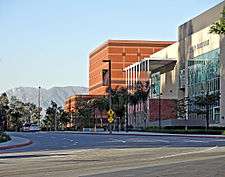
| Undergrad | Graduate | California | U.S. Census | |
|---|---|---|---|---|
| Hispanic and Latino American | 67.7% | 46.4% | 38.6% | 17.7% |
| American Indian | 0.1% | 0.2% | 1.7% | 1.2% |
| White Non-Hispanic | 5.0% | 15.2% | 38.5% | 61.7% |
| Asian American Non-Hispanic | 12.9% | 13.1% | 14.4% | 5.5% |
| Pacific Islander | 0.1% | N/A | N/A | N/A |
| Black Non-Hispanic | 3.3% | 5.8% | 6.5% | 13.2% |
| Two or More Races Non-Hispanic | 1.5% | 2.2% | N/A | N/A |
| Non-resident alien | 7.2% | 12.3% | N/A | N/A |
| Unknown | 2.3% | 4.9% | N/A | N/A |
As of the fall of 2016, Cal State LA switched over from the quarter to the semester system. Tuition and fees for in-state is $6,745, $17,245 for out-of-state and room and board $11,723 as of the 2018-19 academic year with a student/faculty ratio of 25:1. Classes are scheduled Monday through Saturday from 7 am until 10 pm.
Near the edge of the city of Los Angeles, adjacent to the western San Gabriel Valley cities of Alhambra and Monterey Park, the campus affords views of the mountains to the north, the San Gabriel Valley to the east, metropolitan Los Angeles to the west, and the Palos Verdes Peninsula and Catalina Island to the south.
The Harriet and Charles Luckman Fine Arts Complex, the campus' northern gateway, was dedicated in 1994. An architectural tour-de-force, the buildings house a 1,100-seat theater, a fine art gallery and the black box Intimate Theater, completed in 2004.
Construction on a $30 million University-Student Union (U-SU) building has recently been completed. The facility offers a place for students and faculty to congregate and interact before or after class. It replaces the 1975 U-SU building that was closed down in 2004, due to seismic concerns. The U-SU, with a theater, a fitness center, and an array of other services dedicated to the student body. Its meeting rooms connect to those of The Golden Eagle via a third floor bridge. The Golden Eagle includes a food court, a Barnes & Noble operated bookstore and major conference facilities. The university food court is owned by the Coca-Cola Company, offering a selection of fast food chain restaurants that include El Pollo Loco, Carl's Jr., The Spot, Juice It Up, and Kikka Sushi. The U-SU facility houses additional selection of fast food that includes Sbarro and Starbucks. Various places inside the campus also serve food and coffee.
Cal State LA is one of only eight institutions in North and South America selected as a Rockefeller Foundation humanities fellowship residency site.[32]
As of fall 2018 Cal State LA has the second largest enrollment percentage of Mexican Americans and Other Latino Americans that are not Mexican-American in the Cal State University system.[33] Other Latinos Americans having heritage from Central America, South America and the Caribbean.
The HBO show Silicon Valley used the face of the U-SU as the building for the Hooli company.
Campus services
| * All levels, freshman through graduate | |
|---|---|
| African American | 3.5% |
| Asian American | 10.0% |
| Filipino American | 3.0% |
| Pacific Islander | 0.1% |
| White European Americans | 6.4% |
| Native American/American Indian | 0.1% |
| Mexican American/Chicano | 50.3% |
| Other Latino American | 14.8% |
| Multiracial Americans | 1.6% |
| International students | 7.6% |
| Unknown | 2.7% |
| Female | 58.39% |
| Male | 41.61% |
California State University, Los Angeles offers a number of student services including nonremedial tutoring, a women's center, a job placement service, a day care, health services, and health insurance. Cal State LA also offers campus safety and police services like 24-hour foot and vehicle patrols, late night transport/escort service, 24-hour emergency telephones, lighted pathways/sidewalks, and student patrols.
Students, faculty, and staff can get a wireless connection to the Internet by interconnected Wi-Fi hot spots throughout the campus.
Associated Students
Associated Students Incorporated (ASI) is the student government of California State University, Los Angeles. ASI is governed by a student board of directors who is elected each year by the student body of Cal State LA ASI represents the interest of the student body and act as the officially recognized voice of the students. In addition, ASI sponsors a number of campus events and activities using mandatory student fees.[34]
Eagle Advocates a.k.a. Lobby Corps
Eagle Advocates, or ASI's Lobby Corps, is the sole student advocacy group representing the entire student body of the school. Each CSU campus has a lobby corps and is open to all students. Students are trained in advocacy and lobbying throughout the school year. A focus is aimed at the state legislature although local and federal issues are followed as well.[35]
Student housing
From 1964 to 1972, developer Louis Lesser built six off-campus, 10-story high-rise residential halls to house 3,600 students. The 175-acre (71 ha) campus lacked space for horizontal expansion, following the California State University expansion plan started in 1959. This doubled the university's housing capacity, making Cal State LA the largest in the California State University system. Maxwell Starkman & Associates, AIA, of Beverly Hills, designed the development plan. Unlike other components of the Cal State University system being developed in the 1960s, the residence halls were privately financed by Louis Lesser Enterprises, Inc. The first residential life complex phase I on-campus housing was opened in June 1984, and three years later, a second residential life complex Phase II was opened. Cal State LA has a student-housing complex where students can rent a house at double occupancy for $655.00 per month (as of November 2009). During 1984 Summer Olympics that took place in Los Angeles, Cal State LA student houses were upgraded and expanded because it housed the athletics of the 1984 Summer Olympics.[36][37]
Lesser also pioneered underground parking, with his Cal State LA development, at the time considered unusual enough to merit a separate newspaper section header, "Parking Underground", which described a two-level underground parking lot as a "concept" of "subterranean spaces".[37][38]
The new housing expansion the Golden Eagle Apartments (GEA) for Graduate and Upper-Division Students are located one block north of campus. The Student Housing East project is scheduled for completion Fall 2021.
Themed-living communities
Resident Scholars Housing The goal of Resident Scholars Housing is to provide Cal State LA Honors College and academically achieving students with themed housing that supports the mission and vision of the Honors College and the Institutional Learning Outcomes by forming a strong community of students through shared Honors classes, providing learning opportunities and social engagement beyond the classroom and engaging in a student-directed community. It also increases the following: student interaction with Honors faculty, staff and fellow students; involvement in the larger Los Angeles and Cal State LA community; and retention and graduation rates.
Gender Inclusive Housing Gender Inclusive Housing is for students interested in living with people of all gender identities and expressions. The Cal State LA Housing and Residence Life community defines Gender Inclusive Housing as an environment where students may choose to share a room with any other student regardless of sex, biological gender, gender identity, gender expression and sexual orientation.
Halisi Scholars Living Learning Community The Halisi Scholars Living Learning Community is designed to enhance the residential experience for students who are a part of or interested in issues regarding the Black community living on campus by offering the opportunity to connect with faculty and peers, and engage in programs that focus on academic success, cultural awareness and civic engagement. [39]
Parking and public transportation
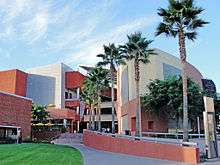
Cal State LA's parking received press coverage for pioneering the concept of underground parking to deal with the limitations of ground space for expansion under the initial California State expansion plans of the early 1960s. Developer Louis Lesser developed "underground parking” in his off campus residential housing development for the university in 1964, with only a two level underground parking structure considered so unusual as to merit a separate newspaper section header, "Parking Underground", and calling the parking “subterranean spaces."[37]
The school is home to the first commuter train station on a college campus, the station of the same name on Metrolink's San Bernardino Line, which opened in October 1994. The school is also accessible from the namesake station on the El Monte Busway; both stations are located at the south end of the campus. Metro Local lines 665, 71, and 256, as well as neighborhood shuttles serve the school.
Construction is completed on a hydrogen fueling station on campus. The station will operate as a teaching resource for classes on alternative energy and fuel systems, as well as a public accommodation selling and dispensing hydrogen to those driving fuel cell vehicles. Cal State LA is one of only three organizations in the state to be awarded CARB funding for such a facility.[40]
Academics
| 2018 | 2017 | 2016 | 2015 | 2014 | 2013 | 2012 | 2011 | |
|---|---|---|---|---|---|---|---|---|
| Freshman applicants | 39,853 | 37,384 | 35,421 | 31,855 | 31,011 | 28,506 | 27,321 | 24,218 |
| Admits | 16,548 | 17,372 | 22,567 | 21,704 | 18,939 | 17,456 | 18,448 | 16,812 |
| % admitted | 41.5 | 46.5 | 63.7 | 68.1 | 61.1 | 61.2 | 67.5 | 69.4 |
| Enrolled | 3,862 | 3,556 | 3,830 | 3,862 | 3,234 | NDA | NDA | NDA |
| Yield Rate | 23.3% | 20.5% | 17.0% | 17.8% | 17.1% | NDA | NDA | NDA |
| GPA | 3.18[48] | NDA | NDA | NDA | NDA | 3.18 | 3.14 | 3.11 |
| SAT composite | 1060[48] | NDA | NDA | NDA | NDA | NDA | 880 | 880 |
| *SAT out of 1600 | ||||||||
The Charter College of Education's Division of Special Education and Counseling has a joint PhD program in Special Education with University of California, Los Angeles, and an independent Ed.D. program in Educational Administration as part of the Division of Applied and Advanced Studies in Education.
Cal State LA's School of Nursing launched the Doctor of Nursing Practice (DNP) in the fall of 2012. The DNP has been accredited by the Western Association of Schools and Colleges (WASC).
In 2019 a team of Cal State LA's graduate students won the American College of Healthcare Executives (ACHE) western regional healthcare executives college bowl case study competition.[49][50]
Cal State LA's Small Business Strong team of undergraduates students was the winner of the 2016 LA Mayor's Cup. The Mayor's Cup is a competition for young entrepreneurs at L.A. universities to pitch innovative solutions for tackling the city’s biggest challenges. More than 100 teams applied. The Cal State LA team and four other finalists pitched their projects to L.A. Mayor Eric Garcetti, deputy mayors, and local business leaders.[51][52][53]
Cal State LA's College of Business and Economics (CB&E) is divided into six departments: Accounting, Economics & Statistics, Finance Law & Real Estate, Information Systems, Management and Marketing. CB&E is accredited by the Association to Advance Collegiate Schools of Business (AACSB International).
In July 2000 the university's Model United Nations (NMUN) chapter placed in the top 30 out of 190 teams in the New York City competition, bringing home its first national conference win since the chapter's inception more than 30 years previous. The Cal State LA student delegation garnered top awards in all categories at the 2009 annual National Model United Nations. In 2010 The student team received both "Outstanding Delegation" and "Outstanding Position Papers", the highest honors a delegation can receive.[32]
With the nation's first Chicano Studies department (established in 1968), Cal State LA is a top source of bachelor's and master's degrees for Hispanic students in California.[32]
At Convocation, held Monday, Aug. 19, 2019 President William A. Covino announced a new college within Cal State Los Angeles, The College of Ethnic, Racial, and Social Transformation. The college will house ethnic studies departments: Asian and Asian American Studies, Chicana(o) and Latina(o) Studies and Pan-African Studies.[54]
Specialized and mission-driven colleges
- Rongxiang Xu College of Health and Human Services
- College of Natural and Social Sciences
- College of Engineering, Computer Science, and Technology
- College of Business and Economics
- The Charter College of Education
- College of Arts and Letters
- The Honors College
- College of Professional and Global Education
- College of Ethnic Studies
Desert Studies Center
The Desert Studies Center is a field station of the California State University located in Zzyzx, California in the Mojave Desert. The purpose of the Center is to provide opportunities to conduct research, receive instruction and experience the Mojave Desert environment. Is officially operated by the California Desert Studies Consortium, a consortium of 7 CSU campuses: Fullerton, Cal Poly Pomona, Long Beach, San Bernardino, Northridge, Dominguez Hills and Los Angeles.[55]
Faculty
Cal State Los Angeles' faculty include two presidential award-winning professors and 13 faculty members honored with the CSU Trustees' Outstanding Professor Awards.[56]
Professors
In December 1999 Raymond Landis, Dean of Engineering and Technology, was honored by the White House for outstanding student mentoring. The recognition earned the university its second presidential award.[57]
In September 1996 chemistry professor Carlos G. Gutiérrez was among the first honorees named by President Bill Clinton to receive the newly established annual Presidential Award for Excellence in Science, Mathematics and Engineering Mentoring, at a White House ceremony.[58]
In Fall 1995 chemistry professor Thomas P. Onak, was named California Professor of the Year by the Carnegie Foundation for the Advancement of Teaching and the Council for Advancement and Support of Education.[59]
In 1992 chemistry professor Phoebe K. Dea, was named California Professor of the Year by the Carnegie Foundation for the Advancement of Teaching and the Council for Advancement and Support of Education.[60]
Hal Fishman served as an assistant adjunct professor of political science for two years. Fishman won the Associated Press Television-Radio Association's first-ever Lifetime Achievement Award for his work as a Los Angeles local (KTLA) news anchor.[61]
Ann Garry, Professor Emerita of Philosophy; early pioneer of the field of feminist philosophy.
Distinguished Visiting Adjunct Professors
- Christopher Isherwood taught a course on Modern English Literature in 1961–1962. A noted author his Berlin Stories was the basis for the Broadway musical and film, Cabaret.[62]
- Dorothy Parker taught a course in the English department in 1962–1963. Parker, a writer and founding member of the Algonquin Round Table, was inducted into the American Academy of Arts and Letters in 1959.[63][64]
Trustee Professors
- Barry Munitz, fifth chancellor of the California State University system, and sixth president of the University of Houston[65]
Rankings
|
|
| ||||||||||||||||||||||||||||||||||||||||||||||
The 2020 U.S. News & World Report's “America’s Best Colleges” issue included the following rankings for Cal State LA in the category of regional universities in the Western United States for universities whose highest degree is a master's: tied for 12th among public universities, tied for 31st among public and private universities, 11th in Best Value Schools and 18th in Best Colleges for Veterans.[70]
Forbes ranked Cal State LA 139th in its 2019 ranking of America's Best Value Colleges out of the 300 universities that were included.[72]
Washington Monthly's 2019 College Ranking Guide names Cal State LA 8th out of 606 schools nationally in the Master's University category.[73] The magazine rates universities based on their contribution to the public good, considering factors that include research, service and social mobility. Also in the 2019 issue by Washington Monthly, Cal State LA ranked 5th for "Best Bang for the Buck" out of 203 schools in the U.S. western region.[74]
In 2018, Cal State LA was ranked the 14th top college in the United States by Payscale and CollegeNet's Social Mobility Index college rankings.[75]
Money ranked Cal State LA 51st in the country out of 727 schools it evaluated for its 2018 Best Colleges ranking.[76]
In January 2017, Cal State LA was ranked #1 in the country for the upward mobility of students. The Equality of Opportunity Project followed 30 million students enrolled at over 2,200 colleges and universities, from 1999-2013, and concluded that the institution with the highest "mobility rate" was Cal State LA.[77]
Cal State LA was ranked 8th in the nation in the amount of B.A. degrees awarded in 2017 to Hispanics by the Hispanic Outlook on Education Magazine[78]
The National Science Foundation lists Cal State LA as the top baccalaureate institution of origin for Latino science and engineering Ph.D. recipients among all undergraduate and master's colleges and universities in the continental U.S.[79] The most recent findings cover 2008 through 2012 and were published in the NSF report, Women, Minorities, and Persons with Disabilities in Science and Engineering: 2015. The data come from surveys conducted by the NSF, the U.S. Department of Education, the U.S. Department of Commerce, and the U.S. Department of Labor.[80]
In 2014 Cal State LA was listed as one of Time magazine's top 100 colleges and universities, according to new criteria proposed by the White House that is based solely on accessibility, affordability, and graduation rate. Ranked at #24, Cal State LA is one of the seven CSU campuses that made the list.[81]
The American Council of Trustees and Alumni gives Cal State LA's General Education an overall score a B.[82]
Engineering competitions
Founded in 1953 as the Department of Engineering, today's College of Engineering, Computer Science and Technology (ECST) was established in 2001.[83] ECST was funded by NASA to advance aerospace technology and space research.[32] Cal State LA's NASA University Research Center is only one of its kind in the state of California. The objective of the program is to design and build a segmented reflector test-bed. The College of Engineering and Technology added the Department of Computer Science and officially became the College of Engineering, Computer Science, and Technology in June 2001.
Cal State LA's College of Engineering, Computer Science, and Technology is divided into five departments: the Departments of Civil Engineering, Computer Science, Electrical and Computer Engineering, Mechanical Engineering, and Technology. Collectively, these departments offer 12 undergraduate programs, four graduate programs and two teaching credentials in collaboration with the Charter College of Education.
The Solar Eagle
The college has achieved international recognition with its advanced vehicles. Cal State LA's Team Solar Eagle has built three cars that competed in solar car races in the United States and Australia, winning a national championship at the American Solar Challenge in 1997.[84] The 1997 champion Solar Eagle III was the first solar and only Hot Wheels[85] reproduction of a student-built vehicle.[86] The Solar Eagle II is on display at the California Science Center in Los Angeles it place third in the nation. Cal State LA’s Solar Eagle, the first solar-powered electric car designed and built by Engineering and Technology students, placed fourth in the nation and is first among California competitors in the transcontinental GM Sunrayce USA. The Solar Eagle is in display at the Cal State LA's Engineering, Computer Science and Technology building lobby.
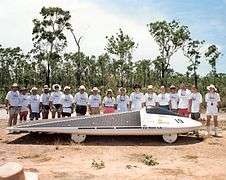
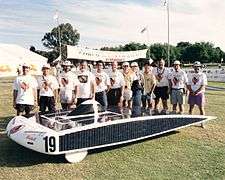
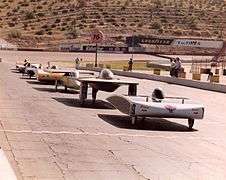
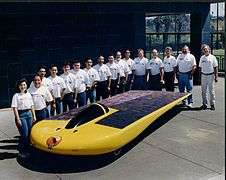 Solar Eagle III National Champions
Solar Eagle III National Champions
Mini Baja
Cal State LA’s Mini Baja vehicle (car #6) finished first place overall and also captured first place in the endurance challenge at the Society of Automotive Engineers (SAE) international 1996 Mini Baja West competition. Cal State LA’s Mini Baja vehicle (car #7) won first place overall at the Society of Automotive Engineers (SAE) international 1998 Mini Baja West competition. Cal State LA’s Mini Baja vehicle (car #38) finished first place overall at the Society of Automotive Engineers (SAE) International 1999 Mini Baja West competition, winning first place awards in the endurance and acceleration challenges as well.
The Super Eagle
The ultra-high gas mileage car ECST Super Eagle won the American Society of Automotive Engineers (SAE) 2004 mileage competition with a tested fuel consumption of 1,615 miles (2,599 km) per gallon. The faculty team advisor, James Ettaro, was honored by the SAE. The Solar Eagle and Super Eagle are the latest in a long line of solar-powered cars and other super-efficient vehicle technologies.
AVTC competitions
In August 2006 Cal State LA became the first university west of the Mississippi and second overall to achieve successful flight powered by fuel cells. The unmanned aerial vehicle was developed by a team of mechanical engineering students working in Cal State LA's Multidisciplinary Flight dynamics and Control Laboratory (MFDCLab).[87][88]
EcoCar competitions
In April 2011 Cal State LA was chosen to become part of the 3-year AVTC[89] EcoCAR2: Plugging into the Future competition managed by Argonne National Laboratory and sponsored by the US Department of Energy and General Motors. EcoCAR2 tasks 15 universities to modify a Chevrolet Malibu into a plug-in hybrid while maintaining safety and consumer acceptability. The university has chosen a parallel-through-the-road architecture as part of the competition.[90] The competition is a collaboration between the College of Engineering, Computer Science, and Technology and the College of Business and Economics, with Engineering handling the design and implementation of the vehicle systems and the Business handling budgeting, fundraising and promotion of the program.
In May 2013 Cal State LA's EcoCAR 2 team came home 2nd place overall in Year Two of the EcoCAR 2: Plugging In to the Future collegiate engineering competition.
Continuing their participation in AVTCs, Cal State LA is involved with General Motors' new competition series called EcoCAR3. This is a four-year competition where 16 universities across northern America were donated a 2016 Chevy Camaro and are focused on converting this traditional fossil fuel vehicle into a plug-in hybrid electric vehicle. Cal State LA's team has focused on developing a post-transmission parallel architecture for their vehicle. Additionally, the team has decided to deviate from the standard expectation of marketing their developed vehicle to consumers and is instead targeting law enforcement fleets as a business to business focus.[91] The EcoCar3 team will have four years (2014–18) to redesign and re-engineer a Chevy Camaro in an effort to reduce the energy consumption and greenhouse emissions of the vehicle, while maintaining consumer acceptability, performance, utility and safety. At the end of the four years, the student-built vehicles will participate in an over-the-road event, raising the stakes for vehicle, dependability and safety.[92]
Programs
Early Entrance Program
The Early Entrance Program (EEP) is an early college entrance program for gifted individuals of middle school and high school ages. The unique educational program is specifically designed to permit young, highly gifted students to enroll in college as full-time students. The Early Entrance Program was established at California State University, Los Angeles in 1982. The program allows qualified students as young as 12 years of age the opportunity to excel at the university level. The program maintains a population of approximately 130 full-time highly gifted teenaged students known as "EEPsters." Every year, approximately 100 academically gifted students from all over the United States apply to EEP, with around 30 applicants admitted. Students must achieve a minimum score of 550 on the evidence-based reading and writing section and 570 on the mathematics section of the SAT; or at least a 22 in English and a 23 in mathematics on the ACT.[11] After a preliminary interview with the EEP director, prospective students must also undergo a rigorous assessment period called a Provisional Quarter (or "Provie Summer") before final admission.
Forensic sciences
Cal State LA's growing forensic science program has been a part of the university curriculum since the founding of the school. It is home to one of the few and the longest-operating graduate Criminal Justice and Criminalistics program west of the Mississippi river,[93] located in the new Los Angeles Regional Crime Lab. The new Hertzberg-Davis Forensic Science Center, which was dedicated on May 11, 2007, jointly house the LAPD's Scientific Investigation Division, the L.A. County Sheriff's Department Scientific Services Bureau and Cal State LA Criminal Justice and Criminalistics programs.[94][95]
Sea floor engineering
Cal State LA also has a comprehensive seafloor-engineering program.[96] Research is conducted at the Naval Facilities Engineering Service Center in Port Hueneme, California.[97] In 2003, Civil engineering professor Mark Tufenkjian led Cal State LA to receive over half a million dollars in grant money. The award of $594,253 is the largest grant ever received by Cal State LA's Department of Civil Engineering.[98]
Cal State LA Experiential Learning
The Cal State LA spring water (bottled water), sold on campus, is the result of a partnership between the university's administration and the College of Business and Economics. Together the two branches of the university worked together to develop a product that would appeal to the student body and be affordable. The college has developed "experiential" learning projects, which students participate in during their final years of schooling. Other projects have included the Volunteer Income Tax Assistance Program, where students complete tax returns for small businesses and low-income community members, marketing and site selection research for the Rocky Mountain Chocolate Factory and a case study for American Apparel.[99][100]
Campus media
University Times
The University Times (UT) is a student-run newspaper. The first student newspaper, at that time called The College Times, was published in June 1948 for the first time. In 1965 The College Times was named the best newspaper by California Intercollegiate Press. On October 2, 1972 The College Times changed its name to University Times, in accordance with the change in university status. The name was the popular result of a campus-wide poll, with "Devil's Advocate" coming in second. Larry Hawthorne was the first editor-in-chief of the University Times.[101]
Golden Eagle Radio
This webcast station started in 2015.[102]
Golden Eagle Productions
Golden Eagle Productions (also known as GEP) is Cal State LA's primary film and television unit, composed of students creating and producing media content such as news and digital pieces, as well as original films and series.[103]
Greek life
| Fraternities (IFC)[104] | Sororities (CPA)[105] | Co-Ed[106] | |||
|---|---|---|---|---|---|
|
|
|
|
| |
Excluding the Greek Council and Order of Omega, as of the summer of 2019, the Cal State LA Campus is home to 25 social fraternal organization chapters, 10 fraternities (two new colonies), 13 sororities, and 2 co-ed fraternities.
There are 4 representative governing bodies of the Greek community at Cal State LA; the Interfraternity Council, National Pan-Hellenic Council, Multi-Cultural Greek Council, and the Panhellenic Council. These governing bodies are advised by the university through the Center for Student Involvement—a division of Cal State LA's University-Student Union. This division is under the auspices of both the University-Student Union and the Department of Student of Affairs. Cal State LA's Greek System began with the establishment of the Alpha Theta Pi (ΑΘΠ) sorority on November 15, 1948.
Intercollegiate Athletics
| Cal State LA Sports Programs[107] | |||
|---|---|---|---|
| Women's sports | Men's sports | ||
| Basketball | Baseball | ||
| Soccer | Basketball | ||
| Tennis | Soccer | ||
| Cross-country | Cross-country | ||
| Volleyball | Track and field (outdoor) | ||
| Beach Volleyball | |||
| Golf | |||
| Track and field† | |||
| † – Track and field includes both indoor and outdoor. | |||
The Golden Eagles are members of the California Collegiate Athletic Association (CCAA) for all sports except women's tennis, which is in the Pacific West Conference, and women's beach volleyball and Indoor Track & Field, which are in the NCAA Division II independent schools. Cal State LA competes in the Division II level of the National Collegiate Athletic Association (NCAA). Prior to January, 1981, Cal State LA was known as the Diablos; the change to Golden Eagles was made by then-President James Rosser to create a more inclusive, less stereotypical mascot.[92]
The university fields as of 2019 fourteen intercollegiate teams for men or women in soccer, baseball, basketball, tennis, golf, volleyball, cross country, indoor track, and outdoor track and field.[107] Cal State LA's more than 11 acres (4.5 ha) athletic facility is named the Billie Jean King Sports Complex. The sports complex—which was approved by the CSU Board of Trustees on September 21—features the Eagle's Nest Arena, the University Stadium, Jesse Owens Track and Field, Reeder Field (baseball), the swimming pool, and tennis and basketball courts. Development project plans for the complex include a new gym, athletic field and the Rosie Casals / Pancho Gonzales tennis center.[108] The center is a new two-story building which will include locker and training rooms on the ground floor with multi-use space and viewing areas on the second floor. It is 7,000 sq. ft. Completion date Fall 2021.
The Eagles Nest is home to the Cal State LA basketball and volleyball teams. The arena seats just over 3,200 fans at full capacity. In 1984, the Eagles Nest hosted the Summer XXIII (23rd) Olympics judo competition. In July 1984 the Olympic mural, Olympic Fantasy, a mosaic tile work by muralist Guillermo "Bill" Granizo, was installed on west side of the arena in remembrance of the event.[109][110][111]
The Los Angeles Football Club (LAFC) selected Cal State LA as the home of its new training facility, soccer operations headquarters, and youth academy.
The LAFC will train on the site at the northern gateway of the Cal State LA campus, though it will play its games in a new stadium in Exposition Park at the Banc of California Stadium. The arrangement was approved by the California State University Board of Trustees.[112]
Entering the 2017–2018 school year, Cal State LA has won a total of 75 conference championships in the university's history. This is in addition to the seven national championships and 10 national runner-up finishes.
- National Division II Championships Won[113]
- Men's Tennis Team titles: 1963, 1964, 1965
- Football: 1964 (#1 on the UPI poll)
- Women's Badminton: 1981
- Men's Archery: 1979
- Men's Track and Field: 1978
Cal State La has won in Men's tennis singles four times in 1963, 1964, 1965 and 1968. In doubles Cal State La has won once in 1963 of the NCAA Men's Division II Tennis Championship. In Women tennis singles Cal State LA was champion once in 1990 and once in doubles the same year in the NCAA Women's Division II Tennis Championship.
Symbols
University Seal
The university seal is reserved for legal, formal and ceremonial purposes, including commencement materials, diplomas, transcripts, formal events, presidential documents and gift items from the President’s Office. The seal, available in full-color or black-and-white, cannot be used in combination with the Cal State LA logo.[114]
University Mace
The University Mace is a ceremonial piece symbolizing the authority under which the university is chartered. It is identified with the Office of the President and is carried in academic processions for commencements and other official university gatherings. The honor of serving as mace-bearer is accorded to the Chair of the Academic Senate.
University badge
The shield, with its urban architecture angles, represents the enterprising, global city in which it resides. Inside the shield, you will find iconic buildings amd landmarks from the Los Angeles skyline. They are drawn to scale and ascend upward, from left to right, pointing toward the future. The thick bordure (outer edge of the shield) has open corners that represent a campus that opens out to the region it serves. The 'A' in Cal State LA, features an eagle's beak at its tip.[115]
Future developments
LA BioSpace
LA BioSpace at Cal State LA will give bioscience startup companies the springboard they need to succeed. Created by grants from Los Angeles County and the U.S. Economic Development Administration, LA BioSpace is a university incubator in the heart of Los Angeles.
Scheduled to open in 2019, the LA BioSpace incubator will equip entrepreneurs to turn scientific advances into job-creating businesses.
LA BioSpace is part of a larger grant project based out of Cal State LA, LABioStart. This project hosts networking events and runs a Bioscience Entrepreneur Boot camp in addition to this incubator.[116]
North Campus Project
The proposed project provides for new student housing facilities, new soccer fields, and a parking structure within the northern portion of the Cal State LA campus. Scope of Work: The student housing facilities will provide 1,500 beds for freshmen and sophomore students, as well as an associated dining facility. The North Field is anticipated to be used as a training soccer field by a major league soccer team, and will also be used as a training field by the community youth soccer organizations. The existing surface parking lots immediately south across Hellman Avenue will be replaced with new soccer fields. These South Fields will be used by the University students, including students living in the existing and proposed new student residence halls on site, and will support the Athletics Department programs. The displaced surface parking will be the accommodated in a new parking structure located next to the existing Parking Structure C, on the site that is currently used as a surface parking lot. The four-level parking structure will provide approximately 1,650 parking spaces, including up to 100 new parking spaces.[117][118]
Notable alumni
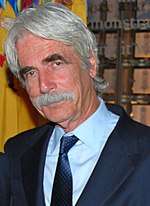

.jpg)
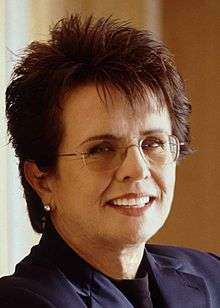
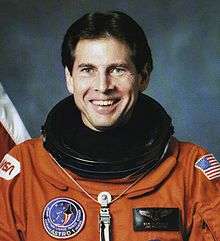
Samuel Durrance .jpg)
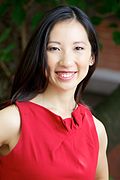
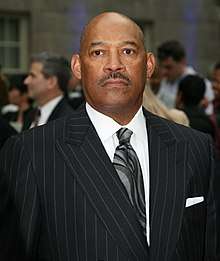
Notable professors
See also
- Ernest E. Debs, Assembly member who sponsored bill establishing the university
- Hispanic Serving Institution
References
- "History of Cal State LA". California State University, Los Angeles. Retrieved April 16, 2020.
- As of June 30, 2019. "U.S. and Canadian 2019 NTSE Participating Institutions Listed by Fiscal Year 2019 Endowment Market Value, and Percentage Change in Market Value from FY18 to FY19 (Revised)". National Association of College and University Business Officers and TIAA. Retrieved April 21, 2020.
- "President's Biography". California State University, Los Angeles. Retrieved November 14, 2019.
- "About the Provost". California State University, Los Angeles. Retrieved July 22, 2020.
- "Fall Term Student Enrollment". The California State University Institutional Research and Analyses. Retrieved November 18, 2019.
- "Search CSU Degrees". California State University. Retrieved April 16, 2020.
- "Archived copy" (PDF). Archived from the original (PDF) on April 24, 2015. Retrieved March 1, 2015.CS1 maint: archived copy as title (link)
- "CSU NEW STUDENTS DUPLICATED APPLICATIONS AND ADMISSIONS BY CAMPUS AND STUDENT LEVEL, FALL 2018". California State University. July 13, 2019.
- "CSU Syncs Up for Increased Student Success". California State University. Retrieved April 30, 2020.
- "University Catalog". California State University, Los Angeles. Retrieved April 28, 2020.
- "Early Entrance Program". California State University website. California State University, Los Angeles. Retrieved April 28, 2020.
- "Cal State LA map". California State University, Los Angeles. Retrieved July 1, 2019.
- John R. Chávez, 1998, Eastside Landmark:A History of the East Los Angeles Community Union, 1968-1993, ISBN 978-0-8047-3333-5, Stanford University Press
- Sustainable Cities and Industrial Ecology in El Sereno Archived 2008-05-24 at the Wayback Machine
- Ogden Hoffman, 1862, Reports of Land Cases Determined in the United States District Court for the Northern District of California, Numa Hubert, San Francisco
- "History of Cal State L.A". Calstatela.edu. Archived from the original on April 5, 2016. Retrieved July 17, 2013.
- J. N. Bowman, "The Rose of Castile", Western Folklore, Vol. 6, No. 3 (Jul., 1947), pp. 204–210, Western States Folklore Society.
- Lloyd, William E. (November 4, 2016). "In Memoriam". California State University, Los Angeles. Cal State LA. Retrieved April 5, 2018.
- McDonald, Howard S. (1955). "Los Angeles State College of Applied Arts and Sciences--Unique in American Higher Education". In Simpson, Roy E. (ed.). The California State Colleges. Sacramento: California State Department of Education. pp. 139–150.
- "Presidential History". California State University, Los Angeles. Cal State LA. January 13, 2014. Retrieved April 5, 2018.
- "CSUN History". Csun.edu. Retrieved July 17, 2013.
- "Campus News - Latest News". Los Angeles City College.
- "Chapter 1". calstatela.edu. Archived from the original on May 28, 2010. Retrieved June 6, 2010.
- "Cal State LA commemorates 50 years of Chicano studies with tribute to civil rights pioneer Dolores Huerta". California State University, Los Angeles. September 6, 2018. Retrieved June 9, 2020.
- 2009 Golden Eagle mascot gets a make-over Retrieved on September 10, 2009
- "History of Cal State LA". California State University, Los Angeles. Retrieved May 2, 2020.
- Gehring, John (September 20, 2000). "Calif. College-Aid Expansion Mixes Merit With Need". Education Week. Retrieved June 9, 2020.
- "Cal State L.A. to open downtown Los Angeles campus". California State University, Los Angeles. July 6, 2015. Retrieved June 9, 2020.
- Rivera, Carla (May 22, 2013). "Cal State trustees appoint new Cal State L.A president, others". Los Angeles Times. Retrieved May 22, 2013.
- http://ir.calstatela.edu/ir/CommonDataSet/CDS1314.pdf
- See Demographics of California and Demographics of the United States for references.
- http://www.calstate.edu/impact/campus/la.html Cal State L.A's economic impact report
- "Ethnicity Enrollment Profile". calstate.edu. Retrieved July 9, 2019.
- "About A.S.I. | Associated Students Inc". Asicsula.org. Retrieved October 19, 2015.
- "A.S.I. Lobby Corps | Associated Students Inc". Asicsula.org. Retrieved October 19, 2015.
- Los Angeles Times, June 25, 1963, “High Rise Developer Defends Loss of View to Convenience”
- Los Angeles Times, March 15, 1964, Tom Cameron, “$118 Million Going into Expansion at L.A. State”
- Housing Archived November 27, 2006, at the Wayback Machine
- "Halisi Scholars Black Living-Learning Community". calstatela.edu. September 24, 2016.
- "Hydrogen Fueling Operation". calstatela.edu. September 26, 2013.
- "A web page that points a browser to a different page after 2 seconds". ir.calstatela.edu.
- "CSUMentor - Explore Campuses - Campus Facts - CSU Los Angeles". Csumentor.edu. January 15, 2013. Retrieved July 17, 2013.
- "Archived copy". Archived from the original on April 30, 2014. Retrieved December 30, 2012.CS1 maint: archived copy as title (link)
- "News" (PDF). calstate.edu. Archived from the original (PDF) on September 23, 2015. Retrieved December 30, 2012.
- "CSU APPLICATIONS AND ADMISSIONS REPORTS, FALL 2012". Calstate.edu. May 14, 2013. Retrieved July 17, 2013.
- "CSU APPLICATIONS AND ADMISSIONS REPORTS, FALL 2012". Calstate.edu. May 14, 2013. Retrieved August 30, 2017.
- "CSU APPLICATIONS AND ADMISSIONS REPORTS, FALL 2012". Calstate.edu. May 14, 2013. Retrieved August 30, 2017.
- "California State University-Los Angeles Admission Requirements". collegesimply.com. CollegeSimply.com. Retrieved September 15, 2019.
- Cal State LA CBE News Archive (April 21, 2019). "2019 College Bowl". calstatela.edu.
- hce-socal.org/newsletters/3rd-annual-western-region-college-bowl/ (April 29, 2018). "3RD ANNUAL WESTERN REGION COLLEGE BOWL, Health care executives of southern california".
- "MAYOR GARCETTI ANNOUNCES WINNER OF 2016 MAYOR'S CUP". City of Los Angeles. December 9, 2016. Retrieved July 21, 2019.
- "INAUGURAL "MAYOR'S CUP" WILL REWARD L.A. ENTREPRENEUR FOR INNOVATIVE SOLUTIONS TO TOUGHEST CIVIC CHALLENGES". City of Los Angeles Mayor's Office. May 25, 2016. Retrieved July 21, 2019.
- "Cal State LA takes top prize in L.A. Mayor's Cup competition". Cal State Office of Communications and Public Affairs. December 9, 2016. Retrieved July 21, 2019.
- "President Covino Announces New College". Cal State LA University Times. August 19, 2019. Retrieved February 9, 2020.
- "Desert Studies Center California State University". California State University Consortium. Retrieved July 6, 2019.
- "CSU Outstanding Professor Awards". calstatela.edu. June 30, 2019.
- "History of Cal State LA: Dec. 1999". calstatela.edu. Retrieved June 30, 2019.
- "History of Cal State LA: Sept. 1996". calstatela.edu. Retrieved June 30, 2019.
- "Chemistry & Biochemistry Faculty Emeiti". calstatela.edu. Retrieved July 5, 2019.
- "Chemistry & Biochemistry Faculty Emeriti". calstatela.edu. Retrieved July 5, 2019.
- Mclellan, Dennis (August 8, 2007). "Durable anchor fought TV fluff". Los Angeles Times.
- "Distinguished Visiting Professor". calstatela.edu. June 30, 2019.
- "Distinguished Visiting Professor". calstatela.edu. June 30, 2019.
- "Distinguished Visiting Professor". calstatela.edu. June 30, 2019.
- CSULA News and Information from the president's office (see welcome) Retrieved on July 11, 2009
- "America's Top Colleges 2019". Forbes. Retrieved August 15, 2019.
- "U.S. College Rankings 2020". Wall Street Journal/Times Higher Education. Retrieved September 26, 2019.
- "Best Colleges 2020: Regional Universities Rankings". U.S. News & World Report. Retrieved September 8, 2019.
- "2019 Rankings -- Masters Universities". Washington Monthly. Retrieved September 8, 2019.
- "California State University - Los Angeles Rankings". U.S. News & World Report. Retrieved June 28, 2019.
- "California State University–Los Angeles - U.S. News Best Grad School Rankings". U.S. News & World Report. Retrieved July 5, 2019.
- "America's Best Value Colleges 2019". Forbes. April 24, 2019.
- "2019 Master's University Rankings". Washington Monthly. 2019.
- "2019 Best Bang for the Buck Rankings: West". Washington Monthly. Retrieved September 9, 2019.
- "Social Mobility Index". Social Mobility Index. CollegeNet and PayScale. 2018. Retrieved July 7, 2019.
- "Money's Best Colleges". Money. 2018. Retrieved July 7, 2019.
- Which California colleges help transform impoverished students into wealthy adults? , Sacramento Bee, January 24, 2017
- Hispanic Outlook on Education Magazine (August 2018). "TOTAL B.A. DEGREES GRANTED 2017". Top 100 Colleges and Universitites for Hispanics 2018. Retrieved January 26, 2019.
- "Doctorate Recipients from United States Universities: Summary Report 2003, Table 7-14" (PDF). National Science Foundation. 2008–2012. Retrieved July 7, 2019.
- NSF report cites Cal State LA as a top producer of Latino doctorate recipients>"California State University - Los Angeles Rankings". calstatela. Retrieved July 7, 2019.
- Wilson, Chris (April 23, 2014). "Obama Thinks He Can Rate Colleges. Can You Do Better? (Interactive)". Time.
- "Institutions in California – What Will They Learn?". Whatwilltheylearn.com. Archived from the original on January 17, 2015. Retrieved February 6, 2013.
- CSLA_StrategicReport_2015/index Archived July 29, 2020, at futurebks.com [Error: unknown archive URL]
- Archived June 17, 2008, at the Wayback Machine
- "Archived copy". Archived from the original on July 24, 2008. Retrieved April 24, 2008.CS1 maint: archived copy as title (link)
- "2009–2010 Factoids". calstatela.edu. Archived from the original on June 16, 2009. Retrieved May 1, 2009.
- "MFDC lab". Calstatela.edu. Retrieved July 17, 2013.
- "Flight Test Success". calstatela.edu. October 22, 2013.
- "Energy Systems - Argonne National Laboratory". transportation.anl.gov.
- "CSULA EcoCAR2 Team Website". csulaecocar2.com. Archived from the original on November 16, 2012. Retrieved June 20, 2019.
- "CSULA EcoCARE Team Website". csulaecocar3.org. Archived from the original on August 9, 2018. Retrieved July 11, 2020.
- "History of Cal State L.A." calstatela.edu. October 22, 2013.
- "CSU Los Angeles - The Impact of the California State University". calstate.edu.
- "School of Criminal Justice and Criminalistics". calstatela.edu. September 26, 2013.
- Gordon, Larry (July 27, 2013). "Cal State L.A. graduate students hone crime scene expertise". Los Angeles Times. Retrieved July 29, 2013.
- Yee, E. Tufenkjian; M.R. Soto; M. Janer; J. Nevarez, V. "The Naval Seafloor Engineering Research Program at California State University, Los Angeles". OCEANS, 2005. Proceedings of MTS/IEEE. Retrieved August 27, 2008.
- "The Naval Seafloor Research Program at CSULA". Calstatela.edu. February 1, 2010. Archived from the original on July 4, 2013. Retrieved July 17, 2013.
- "CSU Newsline - Three Cal State L.A. Students Selected as Office of Naval Research Scholars". Calstate.edu. October 15, 2003. Archived from the original on April 2, 2012. Retrieved July 17, 2013.
- "Cal State LA Login". calstatela.edu.
- "Golden Eagle Water Bottle | Spotlight". Calstatela.edu. Retrieved October 19, 2015.
- https://csulauniversitytimes.com/
- http://web.calstatela.edu/goldeneagleradio/
- http://www.calstatela.edu/academic/tvf/cinematicvisions.php
- "Cal State LA IFC fraternities". www.calstatela.edu. Retrieved July 6, 2019.
- "Cal State LA CPA sororities". www.calstatela.edu. Retrieved July 6, 2019.
- "Cal State LA CPA Co-Ed fraternities". www.calstatela.edu. Retrieved July 6, 2019.
- "Cal State LA". csulaathletics.com.
- "Billie Jean King Sports Complex - Spotlight". calstatela.edu. November 2, 2013.
- "cslainf1.php | California State University, Los Angeles". Calstatela.edu. Archived from the original on April 5, 2016. Retrieved July 14, 2016.
- "Archived copy". Archived from the original on June 14, 2011. Retrieved January 25, 2014.CS1 maint: archived copy as title (link)
- "Greenlee Plaza | Spotlight". Calstatela.edu. Retrieved July 14, 2016.
- https://lafc.com/lafc-announces-plans-establish-soccer-training-facility-cal-state-la/%5B%5D
- "CHAMPIONSHIPS & AWARDS". calstatela.edu. July 20, 2019.
- "Campus Traditions". Calstatela.edu. Retrieved July 6, 2019.
- "Primary Logo | California State University, Los Angeles". Calstatela.edu. Retrieved October 19, 2015.
- "BioSpace | California State University, Los Angeles". Calstatela.edu. Retrieved October 19, 2015.
- "North Campus Project". Calstatela.edu. Retrieved June 28, 2019.
- "Cal State L.A. Student Housing Expansion". urbanize.la. Retrieved July 1, 2019.